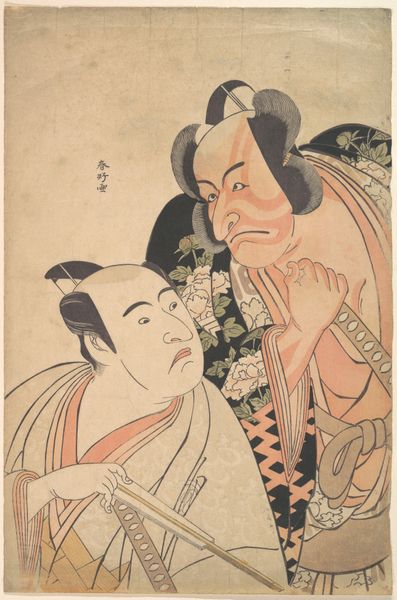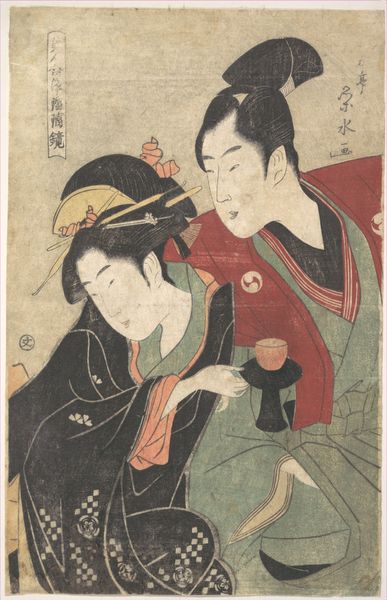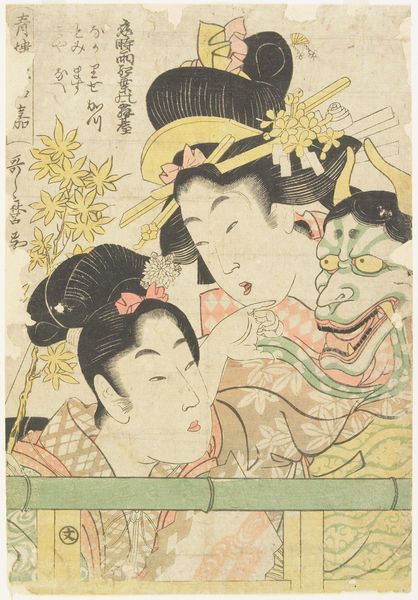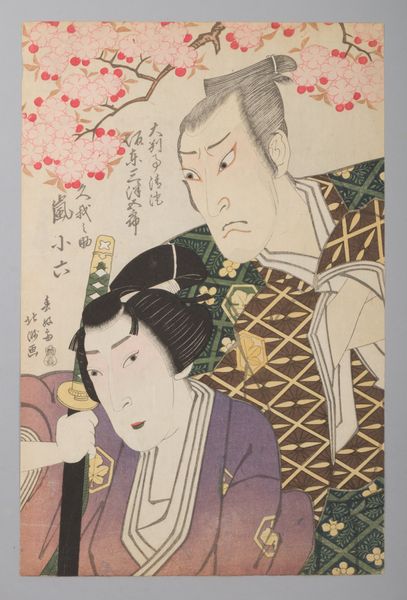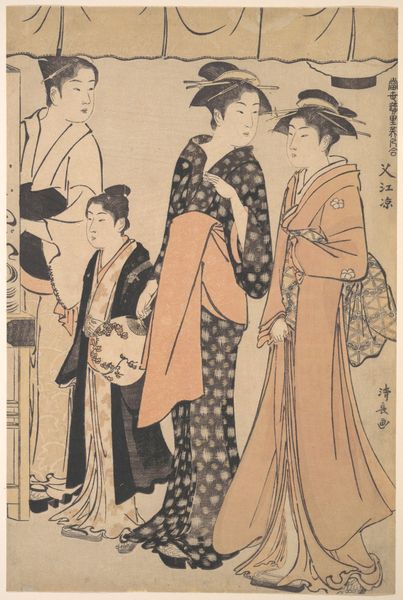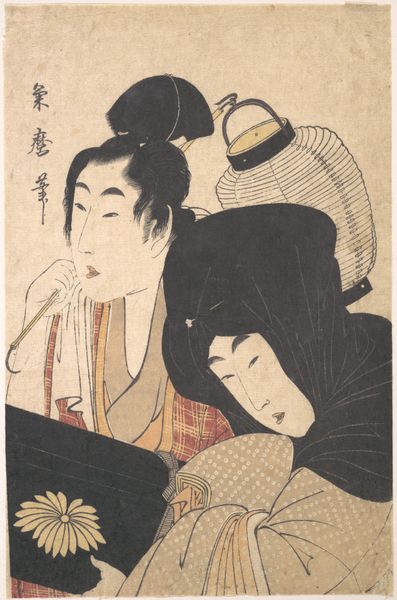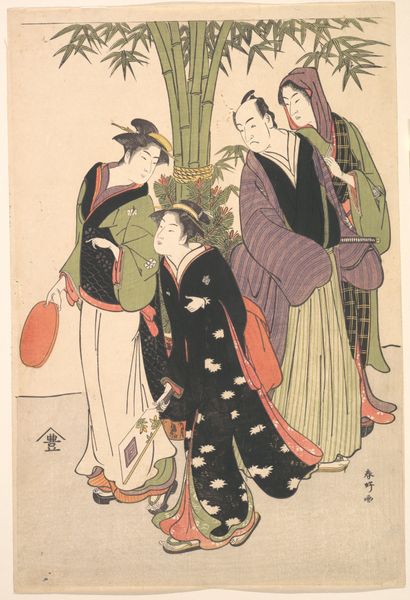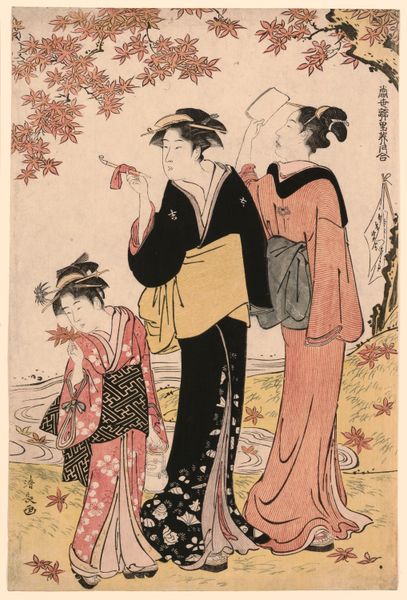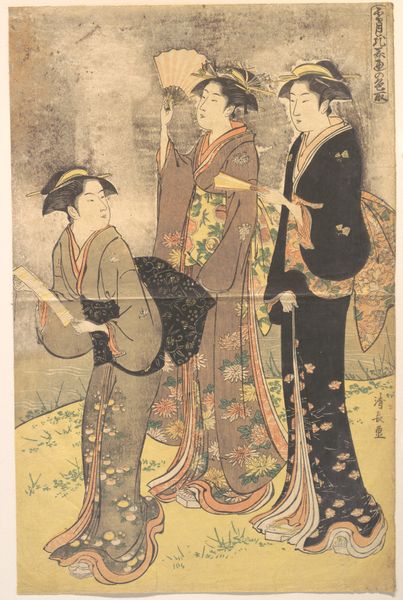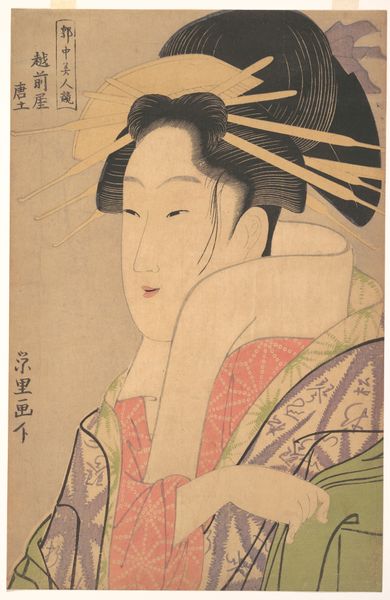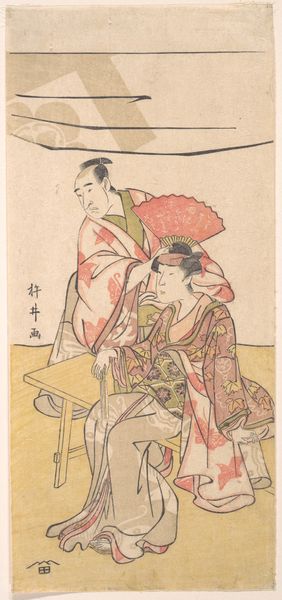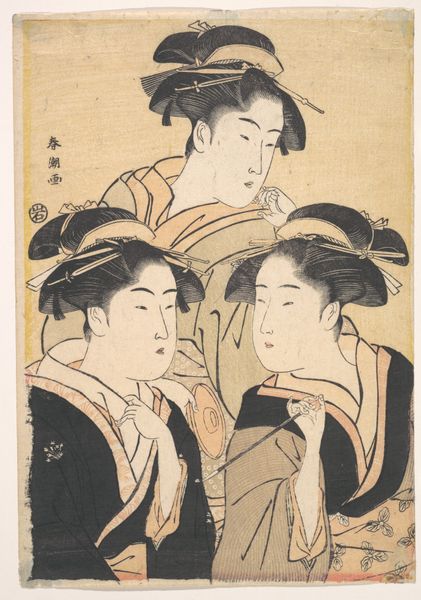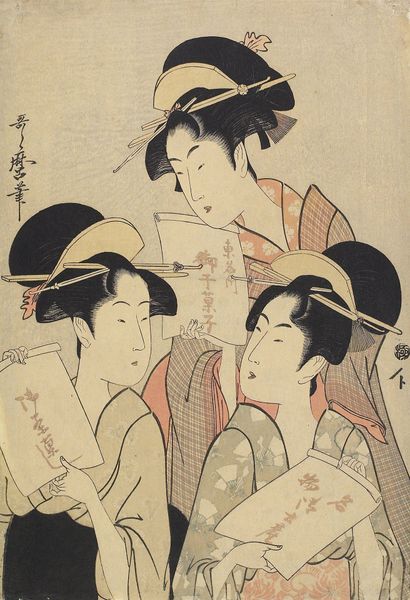
The New Year Niwaka Festival in the Pleasure Quarters 1786 - 1806
0:00
0:00
#
portrait
# print
#
caricature
#
asian-art
#
caricature
#
ukiyo-e
#
figuration
Dimensions: 14 5/8 x 9 3/4 in. (37.1 x 24.8 cm)
Copyright: Public Domain
Editor: This is "The New Year Niwaka Festival in the Pleasure Quarters," a print made by Eishōsai Chōki sometime between 1786 and 1806. The caricatured figures and flattened perspective give it a very immediate, almost satirical feel. What do you see in this piece? Curator: Beyond the aesthetic, I see a snapshot of a very specific cultural moment. Niwaka festivals were these raucous street performances, often poking fun at authority and social norms. That this one is set in the "pleasure quarters" suggests an even more pointed commentary on societal roles and expectations. What kind of social critiques were enabled via that setting? Editor: I guess I hadn’t thought about the location itself contributing to the message. Were these performances always explicitly political? Curator: Not always explicitly, but art, especially popular art like ukiyo-e prints, often served as a subtle form of resistance. By depicting these "unofficial" events, Chōki documented spaces where ordinary people, and particularly those on the margins, could express themselves, subvert hierarchies, and challenge conventions. Considering these dynamics of gender and class, who do you think was the target audience for this type of print? Editor: Maybe people who were involved in, or at least interested in, those kinds of subversive social gatherings? Someone looking for a bit of excitement, maybe even transgression? Curator: Precisely. These prints gave people a way to connect with and circulate counter-narratives and perspectives that we might otherwise have missed, both then and now. Editor: It’s interesting to consider this as more than just a genre scene, but as a document of resistance. Thanks, that's definitely given me a lot to think about! Curator: Indeed, this type of art and the time in which it was made offers an intriguing commentary on societal freedom of expression.
Comments
No comments
Be the first to comment and join the conversation on the ultimate creative platform.
